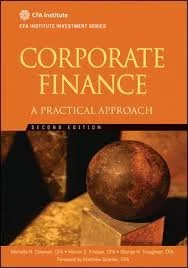TEXT METHOD
Ever wonder why textbooks are written in a similar manner? Why is there an introduction, sections which impart information, and questions at the end? Textbooks are designed in such a way to help you learn, and it’s been perfected of the past 100 years.
The CFA text is no different, yet most students have not been taught how to properly use this powerful learning tool. I’m going to introduce something called the TEXT METHOD, which you can apply and be even more effective when reading the CFA text.
What is the TEXT METHOD? Survey, Question, Read, Recite, Review.
Here’s an example using reading 17 of the Economics Text.
Survey
As I scan Reading 17, I’m looking for topics I might find interesting and things I believe will be critical to the understanding of this particular reading. It looks as though it largely is concerned with long-run supply and demand, GDP and inputs affecting price levels/wages.
Question

After scanning the reading, I need to formulate questions to answer, and most importantly, write them down. This is important because it gives me the opportunity to look for answers with intent. From surveying the text, I noticed a large infographic titled Exhibit 6, along with some formulas for calculating how inputs affect the goods market. I want to answer some questions as I go through the reading –
Define the following in the context of the Goods Market: Consumption, Investment, Government Spending, Net Export.
Let’s ask another question – On example four, it looks like the formula presented elsewhere can be manipulated to answer other inquiries about an economy. Is it the same formula? What iterations do I need to know to answer the questions?
Keep in mind, the way textbooks are written also. Each chapter starts with an introduction and in the CFA texts case, a Learning Outcome Statement. The LOS are specific topics you should know from the reading and can be the framework of your questions. But I encourage you to expand on the LOS to write your own questions as they will be more meaningful to you. For example:
LOS f. Explain the IS and LM curves and how they combine to generate the aggregate demand curve. What are the IS and LM curves? How do they combine for aggregate demand? What is aggregate demand?
Read
Reading seems self-explanatory, but you need to read with a purpose from what you’ve gathered from Surveying and Questioning the text. Every bit of detail from 3,000 pages of CFA text is not important, and impossible to know. As I read through the text I will make a point to sufficiently answer the questions I set out to answer. Yet again, write them down.
Recite
Yet again, the text gives us the opportunity to learn under the TEXT METHOD framework. By completing the Blue Boxes and the End of Chapter questions I am able to recall and recite the questions and answers I have learned from the reading. I also now have an opportunity to ask more questions I may have missed in the reading and further understand the text.
Review
The last R, and the most important step of the TEXT METHOD, review. This should be done within an hour or hopefully in the next day after reading the text. In addition, it needs to happen early and often. It’s extremely hard, even for the smartest of people, to recall what they’ve read in the CFA text four months prior. Let’s say after our reading, we discovered knowing the difference between Nominal and Real GDP is extremely important. I’d make a notecard or a sheet I can review as I make my way through the CFA material. If I take the opportunity to review early and often, I will see the difference between nominal and real GDP 20-30 times during my studies. I can guarantee you I will remember it. A great way to review is to go back after a few weeks and redo the questions. It will keep it fresh in your mind and help you really understand the material.
Keep in mind, most questions point to a specific LOS. If I find I am missing a significant number of questions from LOS g & h from the reading – I need to go back and the TEXT METHOD those specific sections to ensure I understand the material.
You can use your textbooks as a powerful learning tool in the very way it was written. If you ask questions with enthusiasm from the material and have the intent to answer them from the text, this method and tool will help you find success on exam day.
© 2018 Sean Carey, CFA
Follow us for more tips.


